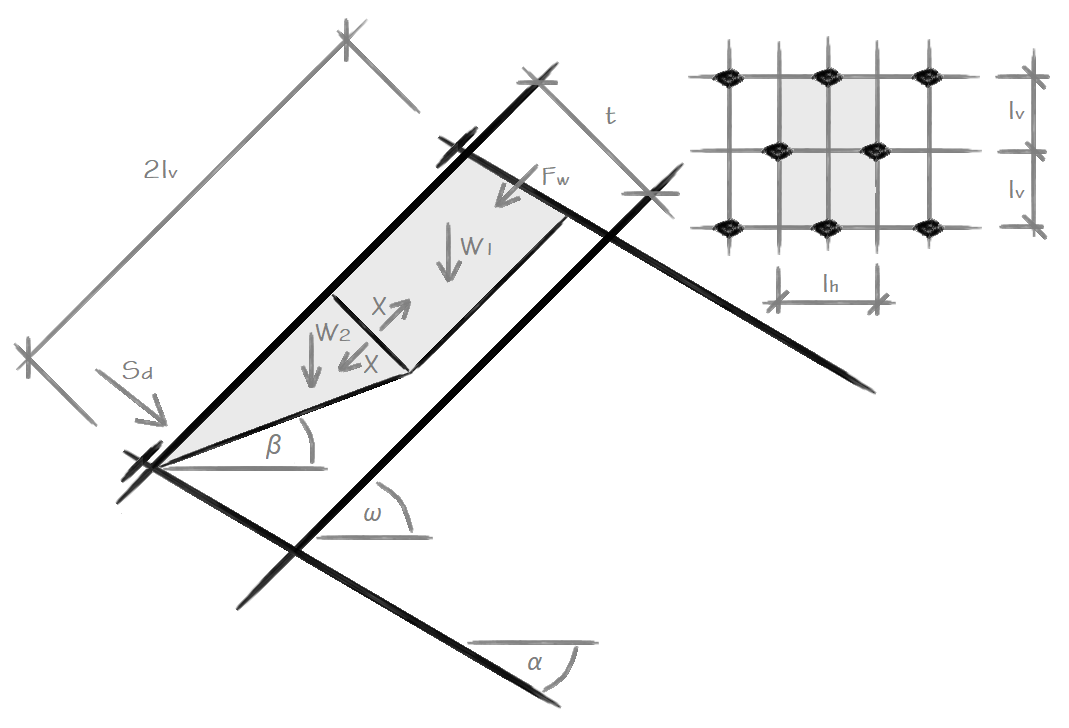Shear Force in the Mesh
The program automatically calculates two shapes of slip surfaces (in the soil block formed in the area between nails) and finds the maximal shear force.
Plane slip surface - maximum shear force is sought over the entire weathered layer thickness.
 Shear force - plane slip surface
Shear force - plane slip surface
![]()
where: | Sd | - | shear force in the mesh |
W | - | soil block weight | |
Fw | - | force due to water flow | |
lv | - | vertical spacing | |
t | - | weathered layer thickness | |
β | - | inclination of the block base | |
ω | - | slope inclination | |
α | - | nail inclination | |
φ | - | angle of the internal friction in a weathered layer | |
c | - | cohession in a weathered layer | |
A | - | block base area |
Broken slip surface - maximum shear force is sought over the entire weathered layer thickness with different inclination at the bottom block base.
 Shear force - broken slip surface
Shear force - broken slip surface
When calculating a broken slip surface the force between blocks X is computed as follows.
![]()
where: | X | - | force between blocks |
W1 | - | weight of the block 1 | |
Fw,1 | - | force due to water flow in the block 1 | |
A1 | - | block 1 base area |
![]()
where: | Sd | - | shear force in the mesh |
W2 | - | weight of the block 2 | |
Fw,12 | - | force due to water flow in the block 2 | |
A2 | - | block 2 base area |
If the water flow is considered, the program calculates with water in the entire weathered layer. The pressure cone angle influences the transsmission of the nail force through the weathered layer.